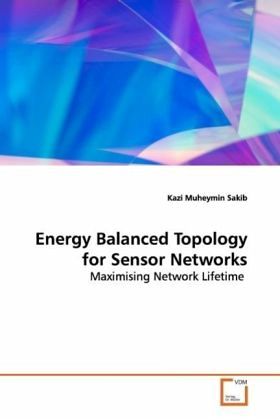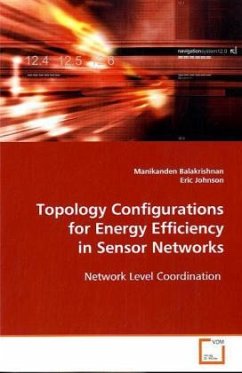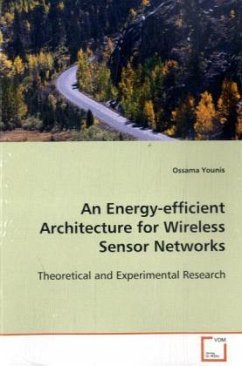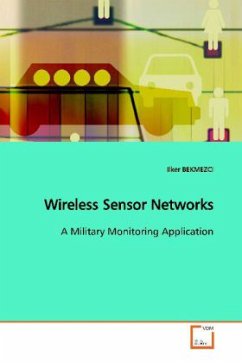
Energy Balanced Topology for Sensor Networks
Maximising Network Lifetime
Versandkostenfrei!
Versandfertig in 6-10 Tagen
52,99 €
inkl. MwSt.

PAYBACK Punkte
26 °P sammeln!
Recent advances in Micro-Electro-Mechanical Systems(MEMS) and low-power short-range radios have enabledrapid development of wireless sensor networks. Future sensor networks are anticipated to includehundreds or thousands of these devices in manyapplications, such as capturing multimedia contentfor surveillance, structural health monitoring,tracking of accidental chemical leaks, machinefailures, earthquakes and intrusion detection. With the increase of sensor applications, a number ofchallenging problems related to the network protocoldesign have emerged - the most important onesrelating to sca...
Recent advances in Micro-Electro-Mechanical Systems
(MEMS) and low-power short-range radios have enabled
rapid development of wireless sensor networks.
Future sensor networks are anticipated to include
hundreds or thousands of these devices in many
applications, such as capturing multimedia content
for surveillance, structural health monitoring,
tracking of accidental chemical leaks, machine
failures, earthquakes and intrusion detection.
With the increase of sensor applications, a number of
challenging problems related to the network protocol
design have emerged - the most important ones
relating to scalability, energy efficiency and
lifetime maximisation. Techniques devised for sensor
networks should be scalable to deal with a large
number of sensors distributed in the field. Wireless
sensor nodes are deployed with limited energy
reserves, so the networks should operate with minimum
energy overhead. In fact, the network should take
into account not only individual node s energy
efficiency but also consider the global picture,
because surviving nodes energy reserves in a failed
network are wasted energy.
(MEMS) and low-power short-range radios have enabled
rapid development of wireless sensor networks.
Future sensor networks are anticipated to include
hundreds or thousands of these devices in many
applications, such as capturing multimedia content
for surveillance, structural health monitoring,
tracking of accidental chemical leaks, machine
failures, earthquakes and intrusion detection.
With the increase of sensor applications, a number of
challenging problems related to the network protocol
design have emerged - the most important ones
relating to scalability, energy efficiency and
lifetime maximisation. Techniques devised for sensor
networks should be scalable to deal with a large
number of sensors distributed in the field. Wireless
sensor nodes are deployed with limited energy
reserves, so the networks should operate with minimum
energy overhead. In fact, the network should take
into account not only individual node s energy
efficiency but also consider the global picture,
because surviving nodes energy reserves in a failed
network are wasted energy.












